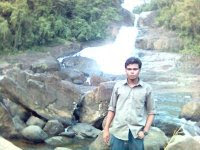Saturday, November 7, 2009
Hollywood studios
Many Hollywood studios are nearby such as Paramount Pictures—the longest-running movie studio or Tribune Studios on Sunset Boulevard and The Jim Henson Company on La Brea Avenue.
 Tribune Entertainment Studios was formerly home to Warner Bros Pictures.
Tribune Entertainment Studios was formerly home to Warner Bros Pictures.
Built in 1919, “The Jazz Singer” with Al Jolson—the first “talkie” was filmed here in 1927. Warner Bros classics including “Merrie Melodies,” and “Loony Tunes” were filmed here. Tribune Broadcasting now resides in the building with the Greek Revival facade. One of the twenty-six TV stations owned by Tribune Broadcasting—which also owns the Los Angeles Times—is located on the same lot.
KTLA Television—Channel 5 in Los Angeles—was the first commercial television station west of the Mississippi. Bob Hope hosted its inaugural broadcast in 1947. Pioneer of many broadcasting firsts such as live, on-the-spot news coverage, broadcasting from a helicopter and the mobile news van the KTLA studio was owned for many years by Gene Autry the singing cowboy.
Jim Henson Company purchased the historic Charlie Chaplin studio in 2000. A statue above the entrance gate of Kermit the Frog holding a cane and dressed in Chaplin's “Little Tramp” attire plays homage to the silent film star and Hollywood legend.
Charlie Chaplin began construction of the original studio in 1917. It opened the next year. “The Goldrush,” “Modern Times” and other Hollywood classic films were created here.
Several companies have owned the studio and produced TV shows including the “Superman” series, The Red Skelton Show and the Perry Mason series. In 1966 Herb Alpert and Jerry Moss' A&M Recording Company and Tijuana Brass Enterprises, Inc. converted the sound stages and Chaplin's swimming pool into a recording studio.
The studio was named a historical cultural monument in 1969.
Hollywood Bowl—with a seating capacity of just under 18,000 is one of the largest natural amphitheaters in the world. It is the summer home of the Los Angeles Philharmonic Orchestra who were also the first to play there in July of 1922. In addition to the Philharmonic many world-renowned musicians-from the Beatles to Itzhak Perlman and Beverly Sills have graced the stage.
Other activities including commencement exercises for Hollywood High School and numerous outdoor plays and pageants have utilized the Hollywood Bowl. A production of Julius Caesar in 1926 made use of the entire canyon including troops encamped on the hillside and temples, bridges and aqueducts designed by Lloyd Wright the eldest son of Frank Lloyd Wright. Lloyd Wright is also known locally as the architect of Wayfarers Chapel the Swedenborgian church in Palos Verdes.
Hollywood and Vine streets
The Walk of Fame—centered on Hollywood and Vine streets—is where over 2200 celebrities have each been recognized with a marble-encased brass star in the sidewalk.
One of the best ways to see the most and miss the least of Hollywood is to take one of the tours that depart from this area. Movie Stars' Homes tours, Hollywood Trolley and Hollywood Double Decker Tours and others provide narrated transportation to the sights you won't want to miss.
 Along the way you'll see Hollywood landmarks such as the Capitol Records Building—visible from the historic intersection of Hollywood and Vine. Capitol Records was the first record company based on the west coast.
Along the way you'll see Hollywood landmarks such as the Capitol Records Building—visible from the historic intersection of Hollywood and Vine. Capitol Records was the first record company based on the west coast.
John Lennon's star on the Hollywood Walk of Fame is just outside the Capitol Records building, appropriate as The Beatles were one of the acts promoted by Capitol Records along with the Beach Boys, Duran Duran, Bob Seger, Bonnie Raitt and Frank Sinatra.
Your tour guide might tell you—as mine did—that the world's first circular office building was designed to resemble a stack of 45 RPM records and was recently instantly renovated to resemble a stack of CDs—at zero cost.
Historic Hollywood Boulevard
The 50-foot Hollywood sign is visible from almost anywhere in Hollywood but for an up close view go to Griffith Park.
Originally built as a giant ad for real estate development the “Hollywoodland” sign was erected in 1923.
The signs history paralleled that of Hollywood itself when a young movie actress who jumped to her death from the top of the 4-story 'H' in 1932 linked the towns name to failed hopes as Hollywood became the land of broken dreams.
Although named an official historical monument (Los Angeles Cultural-Historical Monument #111) the sign suffered from neglect and vandalism.
It was eventually restored and now serves as a symbol of not only the physical place that is Hollywood, but also the entire film and entertainment industry including the movie stars that are celebrated throughout the city.
The Hollywood & Highland Entertainment Center on Hollywood Boulevard was designed and built to frame a view of the famous Hollywood sign.
Historic Hollywood Boulevard is the center of Hollywood and it is here that you can visit Grauman's Chinese Theatre where legendary Hollywood stars foot prints are immortalized in cement, the Kodak Theatre—current home of the Academy Awards—and many more entertainment era icons.
Subscribe to:
Comments (Atom)
